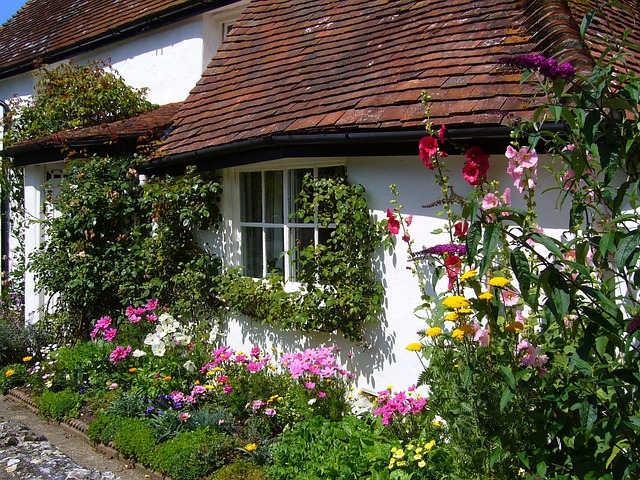
The English garden style is known for its rambling, old-world charm. Stony nooks and crannies are filled to bursting with foliage, and the requisite ramshackle grace allows mother nature to prosper.
English gardens make strong use of shale walls, gravel, and stone pathways, rose arbors, and pots of herbs clustered around doorways. These gardens feature extensive use of rocks or stones along pathways and surrounding groups of plants within the garden.
English Landscape Gardens
The Origin of the English Rock Formal Gardens

The traditional English country garden originates from the design of gardens around cottages in the 1800s. Just before the gardening reign of William Robertson.
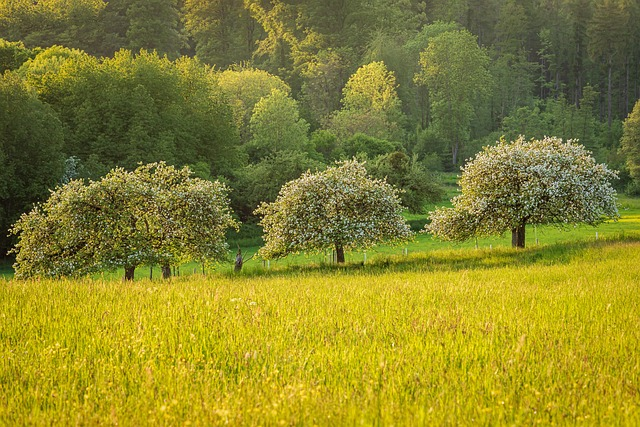
These gardens were required to be useful, they are not simply beautiful gardens. Because of this, English rock gardens are usually designed with a combination of ornamental and edible plants. Lush plantings from spring bulbs to fruit trees, and the various summer lush plantings and combinations for English gardens are absolutely endless.
In fact, traditionally every plant grown in English country gardens was used either medicinally or for food.
Quaint Space & Versatility
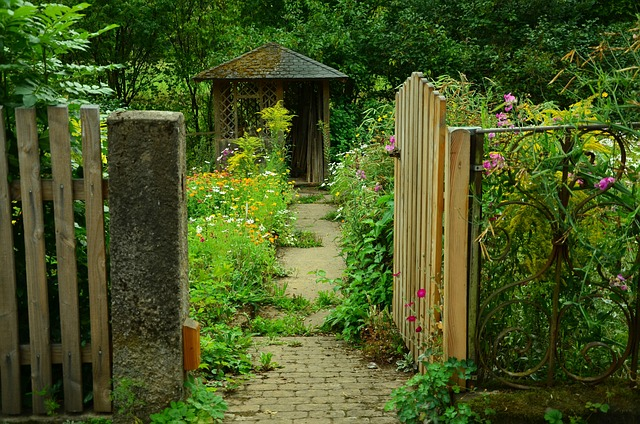
The English rock garden depends on providing a sense of grace and charm, rather than impressing with a grand formal structure.
Instead of properly trimmed bushes and precisely planted patterns of flowers, the rock garden will utilize vines such as ivy, runner beans, potato vines, or climbing roses that tumble over the shale old stone walls.
These walls usually appear to be loose stone and function as retaining walls as well as accent pieces in English gardens.
Stones Help To Manage Natural Growth
English rock gardens tend to be small and dense, using informal design and traditional materials. Their size makes them a viable option for even the smallest of backyards. The stones helped to reduce the natural spread of growth, as well as reducing the necessity for extensive weeding.
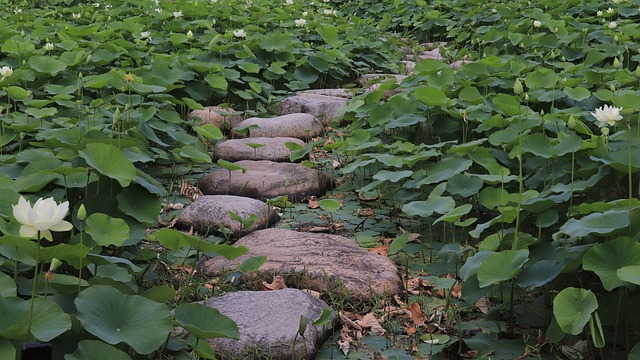
Stone pathways of coarse gravel or flat flagstones were used as they required little care and have a pretty appearance. These pathways were kept clear of weeds primarily by the consistent passing of feet. Various stones can be used in English gardens.
Lush Plantings of Herbs

Herbs are frequently placed in clay pots or in small garden patches right around the doorways, closely surrounded by heavy stones. Kitchen cooks may easily step outside and snip off a few leaves to use while cooking.
Herbs that are also delicate are more likely to survive harsh winters as the warmth from the home will prevent them from dying of frost. The stones and clay pots also help to keep the herbs warm, allowing them to grow sooner in spring and last longer through the autumnal months.
Traditional Plants:
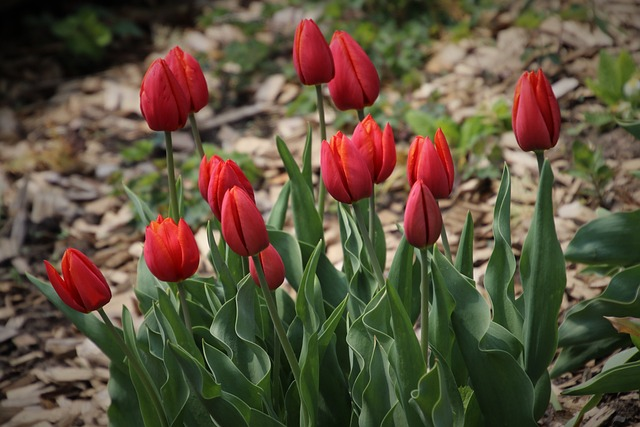
Herbs and flowering veggies, such as onions, sweet peas, and squashes from English Gardens
Other traditional favorites include hollyhocks, yarrow, columbine, foxglove, crocus, climbing hydrangea, iris, dead and stinging nettles, lavender, poppy, sage, thyme, quince shrubs, tulips, bachelors buttons, bee balm, and peony.
Easy Tending:
The English cottage garden depends upon not require much maintenance. The densely planted surface area leaves little room for weeds, and the separations between them are protected by stones.
This dense planting method may take some years to cultivate, especially if many annuals must be planted each spring.
Primarily, however, perennials and seed heads that reseed themselves are used in such gardens to limit the necessity of heavy spring tending.
Aged Beauty:

The charm of the English garden is the feel of age that they have. Rose arbors and old stone walls, covered in ivy obviously will take some time to grow.
You can contribute to the seeming age of the garden by introducing moss onto the rocks that border the paths, as well as training quick-growing vines over the retaining walls until the rose vines or ivy have grown larger.
You can also help to create an illusion of an old garden by interspersing among each other. Perennials naturally try to take over the areas possessed by their neighboring plant species, eventually blending together into a seamless beautiful bed.
As you’re planting, allow some bulbs or cuttings to spill over the borders into neighboring plant territories. (Do NOT do this with aggressive plants, or they will take over your garden!)
Garden Stones
English rock gardens will usually incorporate shale, limestone, and sandstone. The retaining walls are usually a range of grey stones from charcoal to light cream grey.
Explore the enchanted world of the English garden with us as we enter a world of ageless and rustic elegance. This design captures the attention of viewers by using beautiful scenery, winding pathways, and rich vegetation that evokes elegance, charm, and inspiration.
The charm of the English garden rests in its capacity to take us back in time, where organic rules and nature’s whimsy prevails.
English Gardens To Fill Small Spaces
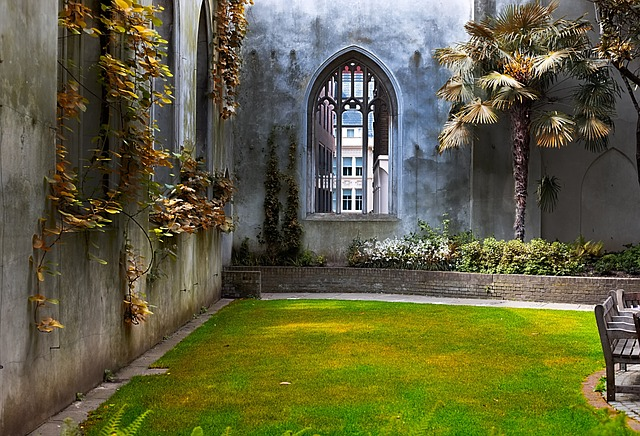
English Gardens That Feel Like a Fantasy
The English Garden is versatile and adaptable so it can be made to fit any area. You may create an outdoor haven bursting with old-world charm, whether you have a large yard or a small space. To change even the smallest outdoor spaces around, choose plant mixes, add focus points, and let your creativity go wild.
A New Dawn For English Gardens
Come along as we explore the mysteries of the English garden and show you how to make your own personal paradise. We’ll look at the components that make up this classic design, from rambling roses to brilliant bulbs, meandering paths, and fairytale landscapes. Allow the splendor of the English garden to spark your creativity.
Many Gardeners Replicated Surrounding Landscapes
The idea of a rock garden originated in the 18th century when English gardeners attempted to replicate the natural landscapes they had seen while traveling. They started using rocks and stone walls in their garden designs after being inspired by the rough topography of the Swiss Alps and the lovely backdrop of the Mediterranean.
Plant Combinations Create A Useful Space
These gardens were required to be useful, not simply beautiful. Because of this, English gardens are usually designed with a combination of ornamental and edibles such as herbs, fruit trees, and more. In fact, traditionally every plant grown in English country gardens was used either medicinally or for food.
English Gardens: Practical, Aesthetic & Timeless
English gardeners quickly understood that rocks had practical and aesthetic advantages. They offered organic drainage and produced microclimates that promoted the growth of various trees, roses, and flowers. This finding sparked the creation of English gardens, which gained its name from the contrast of soft space with blooming flowers and roses to the rough, textured surfaces of rocks and stone walls.
The plant selection is crucial to creating a calming and beautiful setting in English gardens. Perennials, spring bulbs, and rambling roses are examples of flowers in bloom that provide seasonal bursts of color and scent. The garden is enhanced by lush vegetation like lavender and a variety of bushes.
Paths & Gardening: A Common Feature Of English Gardens
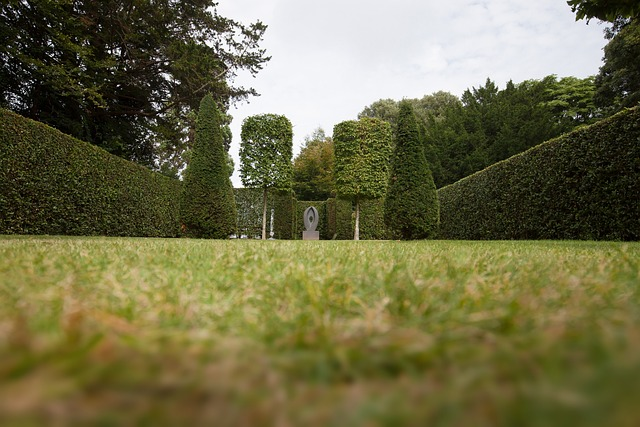
Meandering paths take guests on a discovery-filled tour of the rock garden. These routes are intended to inspire a sense of discovery as if one were exploring a secret oasis. Stone walls and low hedges are strategically positioned to create an enclosed feeling that heightens the space’s coziness.
Turn English Garden Ideas Into Into Your Own Outdoor Spaces
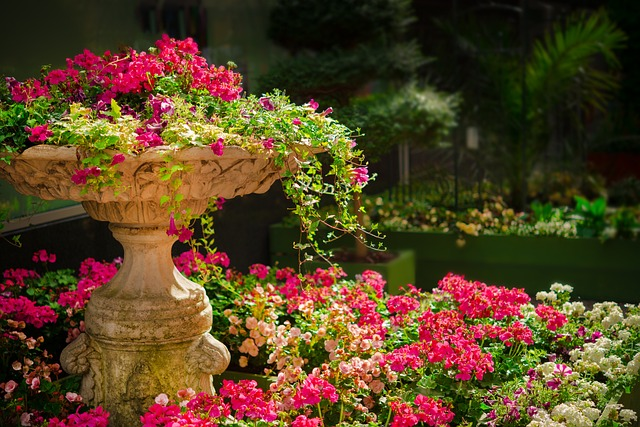
By incorporating the components of the English rock garden, any outdoor space can be transformed into a captivating and enchanting retreat. Since then, the English rock garden has become a beloved feature in many gardens all over the world. Its beauty and adaptability continue to inspire gardeners by providing a space where nature and creativity intertwine.
Quaint Versatility: Discovering the Delightful Versatility of English Gardens
The English Garden style relies more on elegance and charm than it does on imposing a massive formal design.
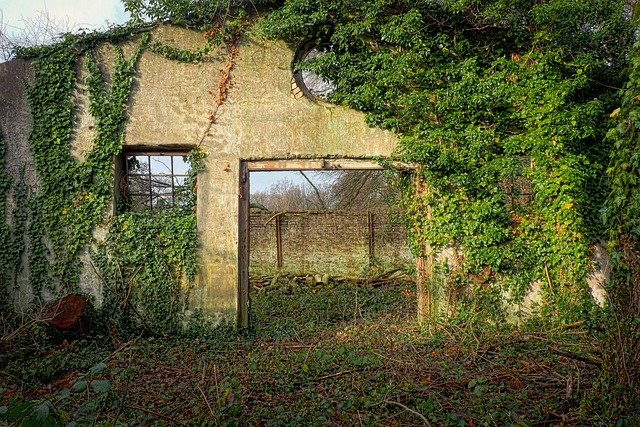
The garden will make use of vining plants, such as ivy, runner beans, potato vines, or climbing roses that tumble over the shale rock walls, as opposed to carefully manicured shrubs, and precisely set patterns of flowers. These retaining walls serve as accent pieces in the English garden and typically have a loose stone appearance.
English Gardens for Small Yards
English gardens are typically compact and small, with informal designs and traditional materials. Their size makes them a practical option for even the smallest backyards. The stone border help to reduce the natural spread of plant growth, as well as the need for extensive weeding.
Meandering Paths: Signature Style of English Gardens
Stone pathways of coarse gravel or flat flagstones were used in these charming gardens because they require little care and have a pretty appearance, and they were kept clear of weeds primarily by the consistent passing of feet. The casual meandering paths added to the sense of discovery and whimsy that defines the English rock garden experience.
The English garden’s adaptation to many settings and situations is what gives it its flexibility. The rock garden may be designed to fit many environments, whether it is tucked away against a hillside or integrated into a courtyard. Utilizing local stones and shale as well as other natural materials allows for a seamless interaction with the landscape.
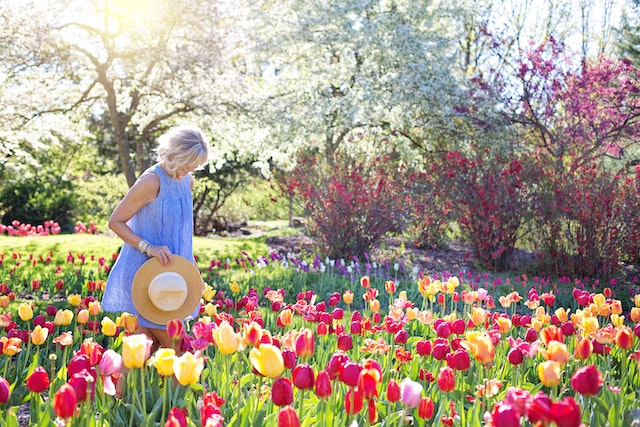
Another distinguishing element of the English garden is its capacity to display a wide variety of plant species. Other perennials, alpines, and groundcovers join the vining plants that flow over the rock walls in this lovely setting. Plant combinations are carefully chosen to provide a continual display of color and texture throughout the seasons.
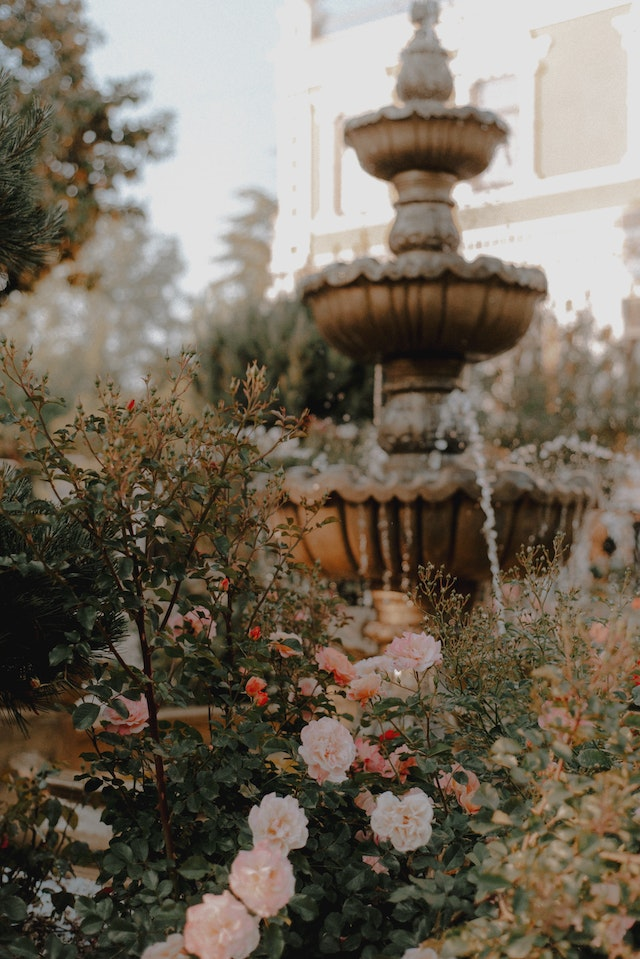
Sometimes, the design includes water-related designs to offer even more appeal. Small waterfalls or streams produce a calming environment to fill your house with serenity.
English Gardening For All Yard Sizes
The charming and adaptable appeal of English rock gardens has made them a popular element of garden design. They provide a chance to design a charming outdoor getaway where peaceful cohabitation. The English rock garden captivates with its subtle beauty and unmistakable charm, whether it is in a small yard or a vast landscape.
The English rock garden is an example of how natural and conventional materials may be used artistically. It radiates an elegance, charm, and adaptability that withstands the test of time and fashion. These gardens continue to enthrall and inspire gardeners all around the world because of their charming beauty and versatility.
Herbs: Exploring the Culinary and Fragrant World
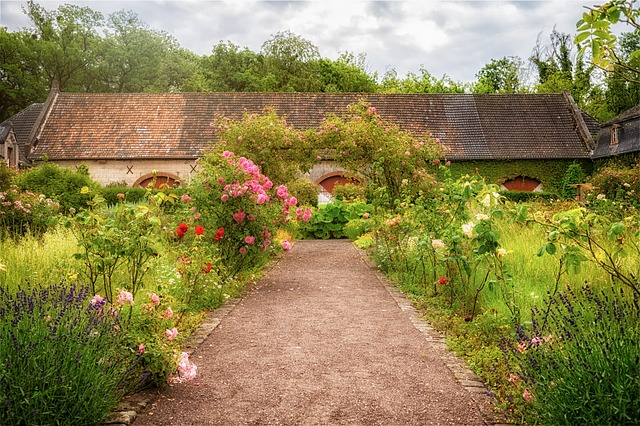
Herbs are an important component of the enchanted world of English gardens, enhancing the scenery with both beauty and usefulness. The kitchen and the garden are typically connected by placing these fragrant flowers in clay pots or little garden plots right by the entryway.
The near proximity of herbs to the entrances allows kitchen cooks to readily stroll outside and snip off a few leaves or sprigs to enrich their culinary masterpieces. This easy access to fresh herbs enhances meals by giving them the bright tastes and fragrant aromas that only nature can produce.
Gardening With Winter Interest…
Interestingly, placing plants strategically near entrances also helps to shield them from the chilly winters. The warmth coming from the home will help delicate seed heads, flowers, fruit trees, and roses that are more prone to frost damage.
The herbs are protected from the cold by a built-in natural barrier created by their closeness to the structure. The herbs are also surrounded by stones and clay pots that give an additional layer of insulation, retaining their heat and enabling them to survive even in frigid weather.
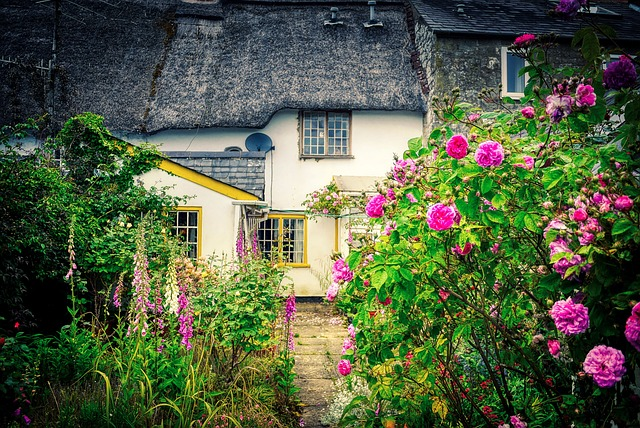
Herbs thrive in the microclimate that is created by the interaction of the radiant heat from the house with the thermal qualities of the stones and clay pots. They may develop more quickly in the spring and live longer in the fall because of this hospitable atmosphere. The herbs continue to grow in this protected environment, supplying a steady stream of fresh ingredients for cooking projects and enhancing the flavor and authenticity of every meal.
Herbs are included in the English garden for functional reasons as well as to enhance its aesthetic appeal. The luxuriant foliage, beautiful blossoms, and aromatic leaves add to the area’s overall appeal by creating visual interest. Herbs give the garden a sense of vigor and life, whether it’s the aggressiveness of rosemary, the elegance of lavender, or the adaptability of mint.
A kitchen garden can be a lovely addition to any house, providing both beauty and the practicality of having fresh fruits, veggies, and herbs close at hand.
Traditional Plants: Embracing the Essence of Traditional English Garden Plants
Traditional plants have a particular position in the world of English gardens since they enhance the environment with both beauty and practicality. For their capacity to flourish in the English environment while offering a lovely variety of colors, textures, and smells, these plants have long been treasured. They are an essential component of the beautiful attraction that characterizes these gardens, ranging from herbs and flowering plants to vegetables to treasured favorites.
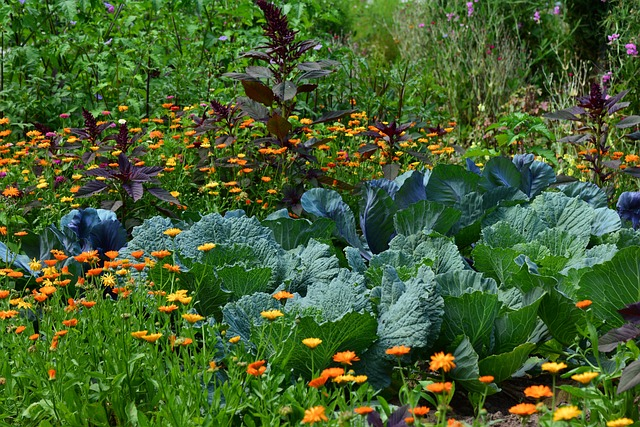
Herbs, Vegetables, Flowers & Many Other Shrubs – All Season Long
In addition to being aesthetically beautiful, herbs and flowering vegetables also provide fresh, organic foods for your table. Squashes, sweet peas, and onions are a few examples of these versatile plants that provide beauty and nourishment to your garden. These plants may thrive with little care, producing an abundant crop that will improve your culinary creativity and increase your eating experiences.
Hollyhocks, yarrow, columbine, foxglove, crocus, climbing hydrangea, iris, dead and stinging nettles, lavender, poppy, sage, thyme, quince shrubs, tulips, bachelor’s buttons, bee balm, and peony are a few of the classic favorites in English gardens. Each of these plants adds its distinct qualities to the garden’s overall tapestry, blending the colors and textures in the space in a pleasing way.
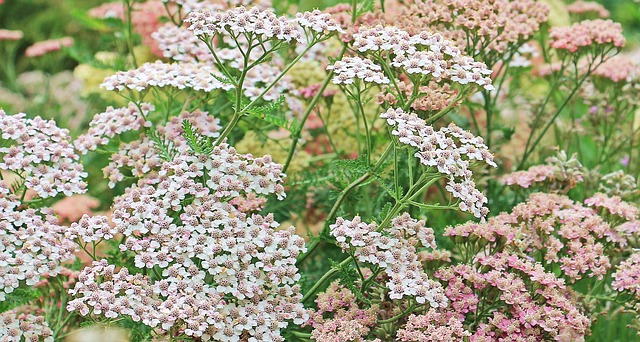
Yarrow gives a delicate touch with its feathery leaves and clusters of small flowers, while hollyhocks stand tall with their stately stalks crowned by vivid blossoms. Foxgloves enchant with their towering spires of bell-shaped flowers, while columbines enchant with their complex and exquisite blossoms. The appearance of crocuses marks the start of spring and brings vibrant flashes of color to the reviving garden.
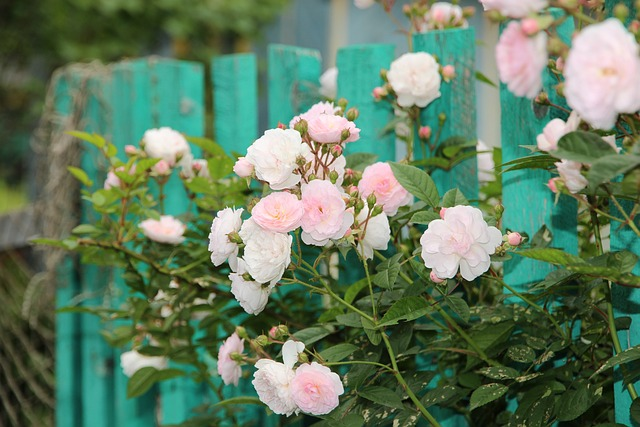
While dead and stinging nettles add to the garden’s raw and natural charm, climbing roses, hydrangea and iris provide a touch of elegance with their lovely shapes and magnificent blooms. Poppies produce a charming display of tiny petals dancing in the breeze, while lavender fills the air with its enticing aroma. Sage and thyme are helpful and attractive additions to the garden because of their fragrant presence and culinary value.
Inspiration for Gardening With Visual Impact
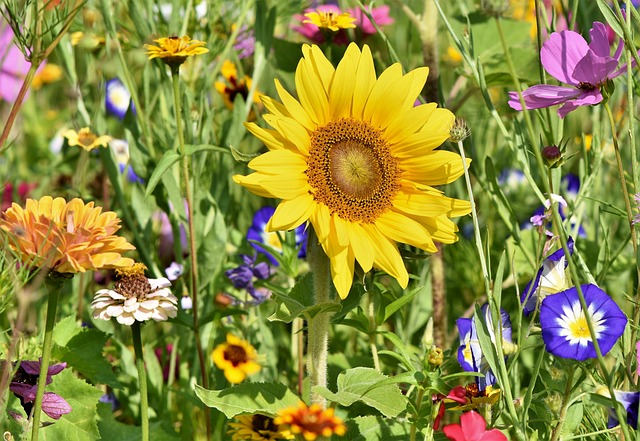
In spring, tulips display a wide variety of plant combinations of colors and forms, while quince bushes provide bursts of color with their bright flowers. As well as adding its own special charm to the garden, bachelor’s buttons, bee balm, and peonies also entice pollinators with their alluring blossoms.
You can appreciate the rich legacy and timeless beauty that this design offers by introducing these classic plants into your English garden. They are the ideal selections for producing an attractive garden space due to their durability, flexibility, and capacity to grow in the English environment.
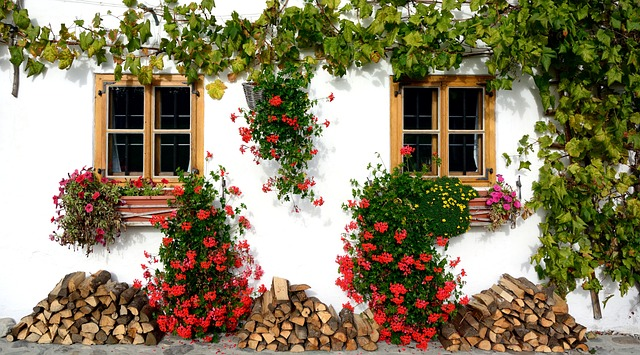
Traditional plants are the heart and soul of English gardens, capturing the essence of time-honored glory and the spirit of nature. All plant combinations contribute significantly to the attractiveness of the English garden, from the popular favorites that adorn the landscape with their gorgeous displays to the treasured herbs spring bulbs, and blooming vegetables that offer both gastronomic and visual delights.
Easy Tending: The Effortless Beauty of the English Cottage Garden
The English cottage garden’s capacity to grow with little upkeep is one of its distinguishing features. These gardens are created to be densely planted, which means there is little place for weeds to establish and fill themselves. As a result, you may spend more time admiring grace rather than combating unwelcome invaders.
Stone Reduce Weed Development
Stones fill natural barrier that further reduces weed development.

Camouflage is mastered in an English country garden. Plants are positioned carefully to conceal seams in the stone borders, creating the appearance that the greenery just naturally sprang from the stones themselves. In addition to increasing the visual appeal, this seamless blending of stone and plant life also acts as a practical strategy to lessen maintenance requirements.
While obtaining the full grandeur of a thickly planted cottage garden may take some time, especially when it entails the continuous planting of annuals each spring, the long-term advantages are well worth the initial effort. Perennials and self-seeding plant options, which organically reestablish themselves year after year and don’t require a lot of spring maintenance, are the main plant types in these gardens.
The English cottage garden is transformed into a self-sustaining work of art by using hardy perennials and self-seeding plants. After they have taken root, these will keep adorning your landscape with their blossoms and leaves, progressively enlarging the spaces between the stones, and producing a luscious tapestry of hues and textures. The garden evolves with each season, growing more colorful and beautiful.
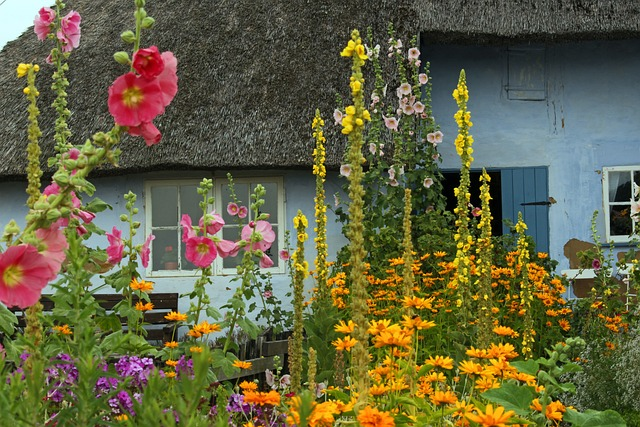
English cottage gardens are simple to maintain, so you can spend more time admiring their graceful scenery and less time slaving away in the dirt. It invites you to relax amidst the calming greenery and scented flowers and to relish the simple joys of nature.
English Gardens With Flowers That Bloom All Year
Through simple maintenance, the English cottage garden displays its unforced grace. Its dense planting arrangement, shielded by stones and expert camouflaging, prevents weed development and lessens the need for intense upkeep.
Charming Cottage Garden Charm
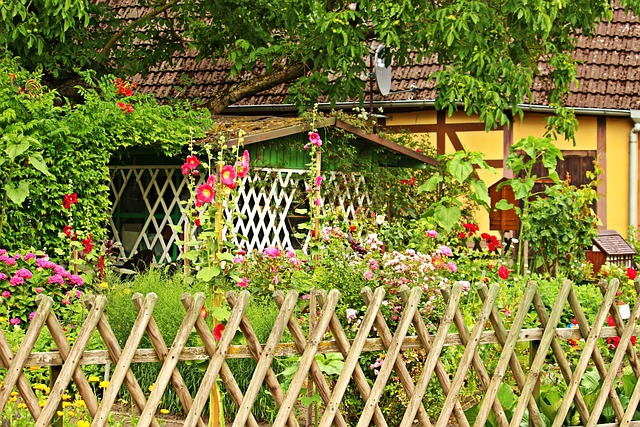
These beautiful gardens progressively bloom over time, becoming self-sustaining and offering an ever-evolving show of natural grandeur because they place a strong emphasis on perennials and self-seeding plants. Enjoy the low-maintenance attraction of the English cottage garden and embrace its charm.
Aged Grace: Unveiling the Timeless Style of English Gardens

The English garden’s capacity to convey an air of age and history is one of its unquestionable beauties. We are reminded that these formal gardens have been tended to and fashioned over many years, if not decades, by the presence of rose arbors and ivy-covered spaces, which conjures a sense of timeless grace and glory. While it could take some time to create such a sophisticated atmosphere, the results are well worth the wait.
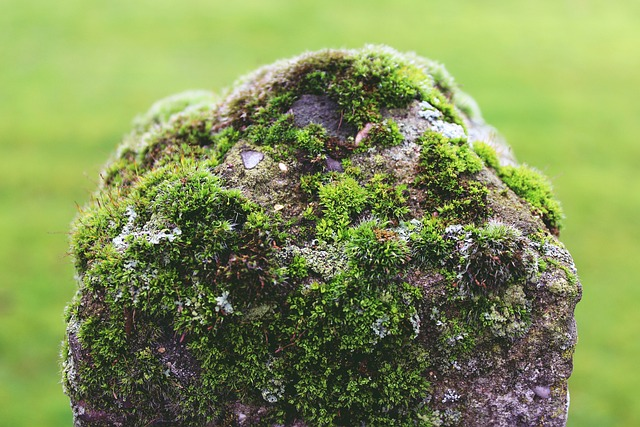
Consider adding moss to the rocks that surround the garden and paths to help create the feeling of antiquity. This organic decoration gives the garden a worn appearance, as if time hasn’t touched it. To provide the illusion of mature rose vines or sprawling ivy, quick-growing vines can be trained over retaining walls, giving the landscape more depth anramblid personality.
Plant types placed in a deliberate pattern among one another can also give the garden a feeling of antiquity. Perennials organically stretch out and gradually meld with the plants around them to form a seamless and lovely tapestry. The spontaneous development patterns of an old garden, where many species dwell peacefully throughout time, are mimicked by this blending effect. Allowing bulbs or cuttings to overgrow borders and into adjacent areas when you plant can give the appearance of a mature, established garden.

An old English garden requires careful planning and patience to maintain. It necessitates care and letting nature run its course to promote an atmosphere where flowers may progressively entwine and provide an alluring show.
As you see your English garden change, let the pull of aging beauty draw you in. Accept the steadily expanding rose arbors and the wall-adorning creeping vines. Make your garden a refuge where you may experience nature’s ageless grace, a sanctuary that conjures the spirit of a bygone period.
A climbing rose feature is always a focal point in English gardens
The English garden’s enduring charm remains iconic. You may duplicate the atmosphere of antiquity and elegance that characterizes these gardens by gradually encouraging the growth of rose arbors, ivy-covered walls, and entwined plants. Give the garden room to grow and accept the natural processes that create a setting resembling an established landscape. The end product will be an English garden that provides a refuge steeped in the grandeur of the past and enchants it with its eternal attractiveness.
Garden Stones: The Foundation of English Rock Gardens
Stones are essential in establishing an alluring and genuine aesthetic in English rock gardens. The retaining walls are typically made of sandstone, limestone, or shale, which gives the environment a feeling of rustic elegance. These grey stones, which range in color from charcoal to light cream gray, create a flexible palette that blends well with the local flora.
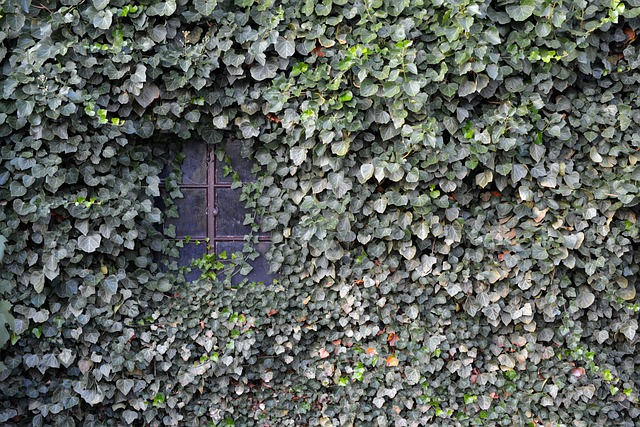
These natural stones were used to construct retaining walls that had both practical and aesthetic value. They provide the garden with the necessary support, avoiding soil erosion and establishing graded levels. These worn stone walls radiate a timeless appeal that evokes a feeling of permanence and security.
The stones used for borders and paths are frequently acquired from the same materials as the retaining walls to maintain consistency and coherence. This consistency creates a coherent visual language that allows the components to work together as a whole. Visitors are guided around the garden by the walkways, which can be either composed of flat flagstones or coarse gravel and are covered in the very stones that serve as the landscape’s building blocks.
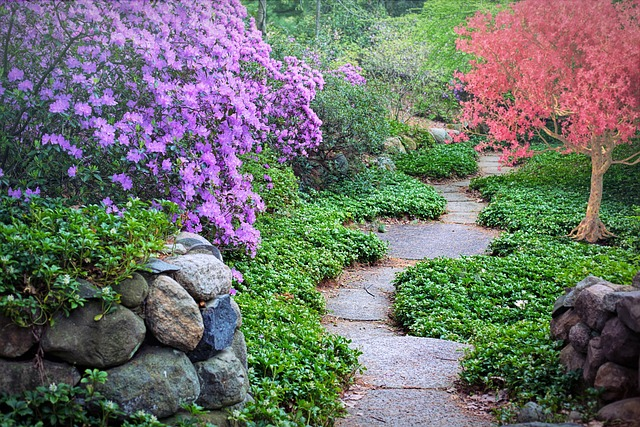
A more urban feel may be added to the garden by using bricks in some places instead of stones. The natural textures and colors of the surrounding plant life and trees may be contrasted with these bricks, which can be used to build both walls and walkways. This contrast of materials gives the entire composition a sense of sophistication and complexity, enhancing the viewing experience.
The Ageless Charm of Garden Stones
When creating your own English rock garden, keep in mind that the choice and arrangement of the stones are an important part of the design process. Let the stones support your garden’s growth, blending in to highlight the natural surroundings.
The basic cornerstone of English rock gardens is the choice and application of garden stones. These organic elements, such as shale, limestone, and sandstone, add to the natural beauty and allure of the terrain.
Landscape Design: Cottage Garden & English style garden
Are you mesmerized by the English rock garden’s classic beauty and allure? Do you want to build your own personal haven where nature is at its most pure? Look nowhere else. We at New Life Rockeries are committed to assisting you in realizing your goal. We are dedicated to creating gorgeous English gardens that perfectly merge with your scenery using our experience in garden design and construction.
We have the expertise and experience to turn your concept for a charming cottage garden or a more formal English-style garden into a reality. Our team of professionals landscaping near me will work with you to create a setting that accurately reflects your own tastes and aspirations by providing you with English garden ideas and direction.
You may be confident that New Life Rockeries will carefully plan your English rock garden to meet your needs and tastes. We take pleasure in creating garden ideas that not only have a beautiful appearance but also flow well with your current landscape. Our objective is to design an area that appears natural and as though it has always been a part of your outside space.

